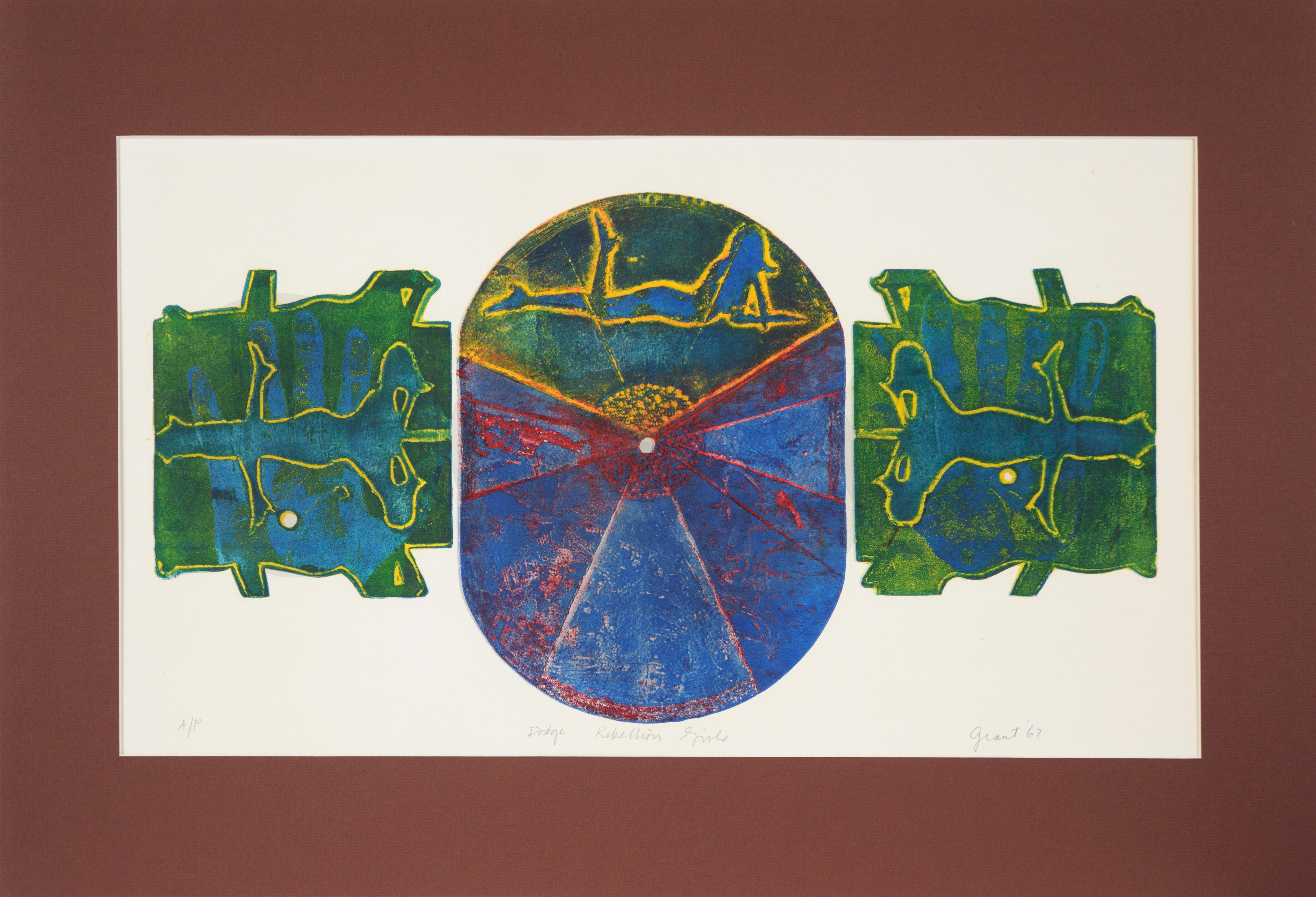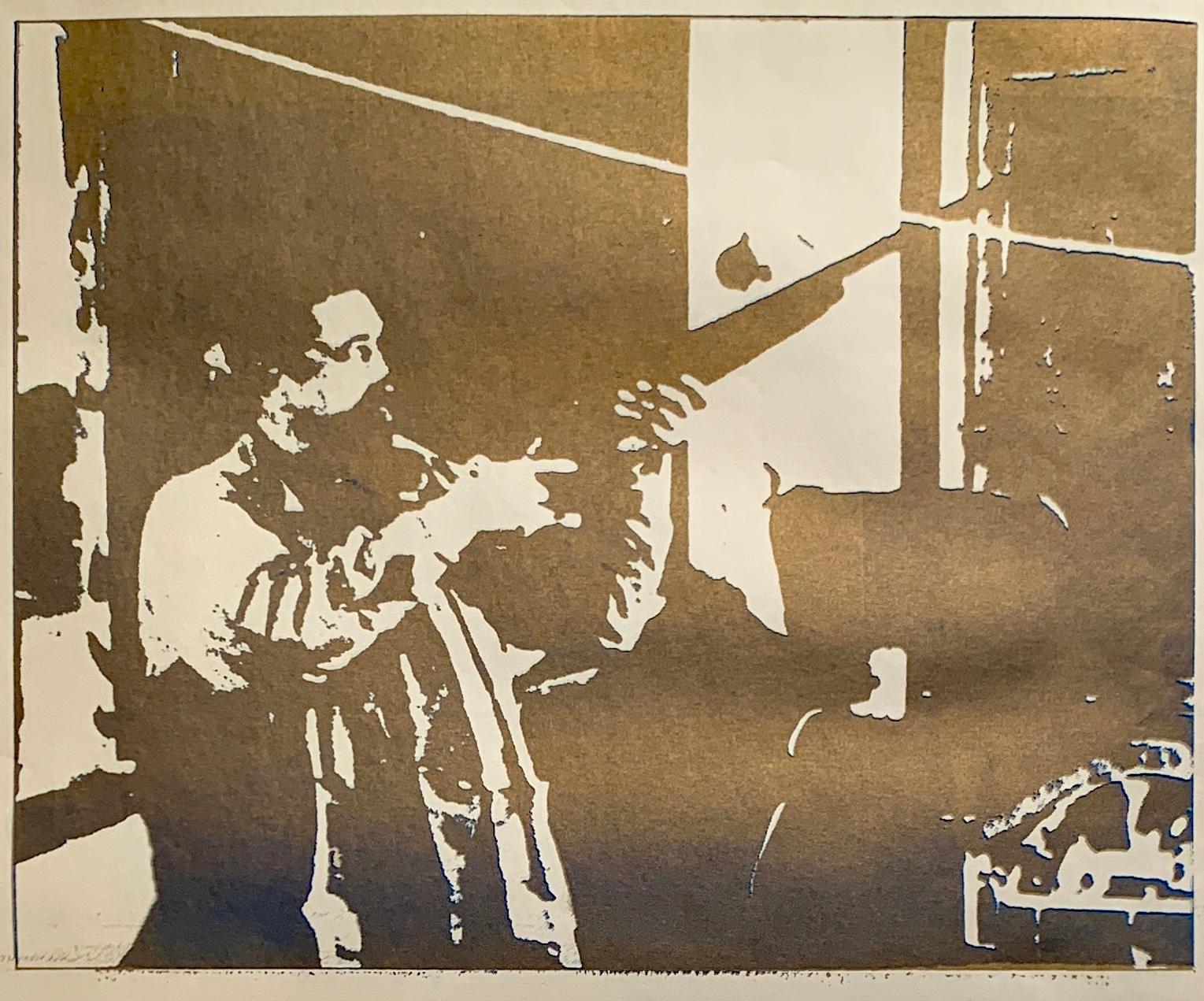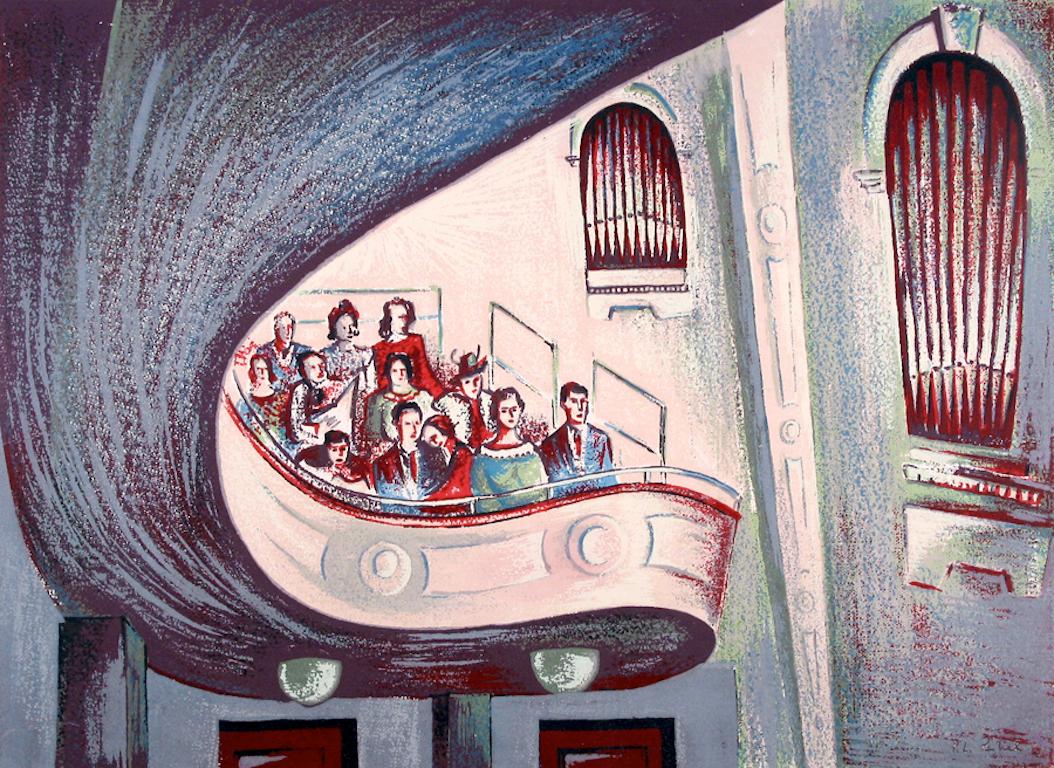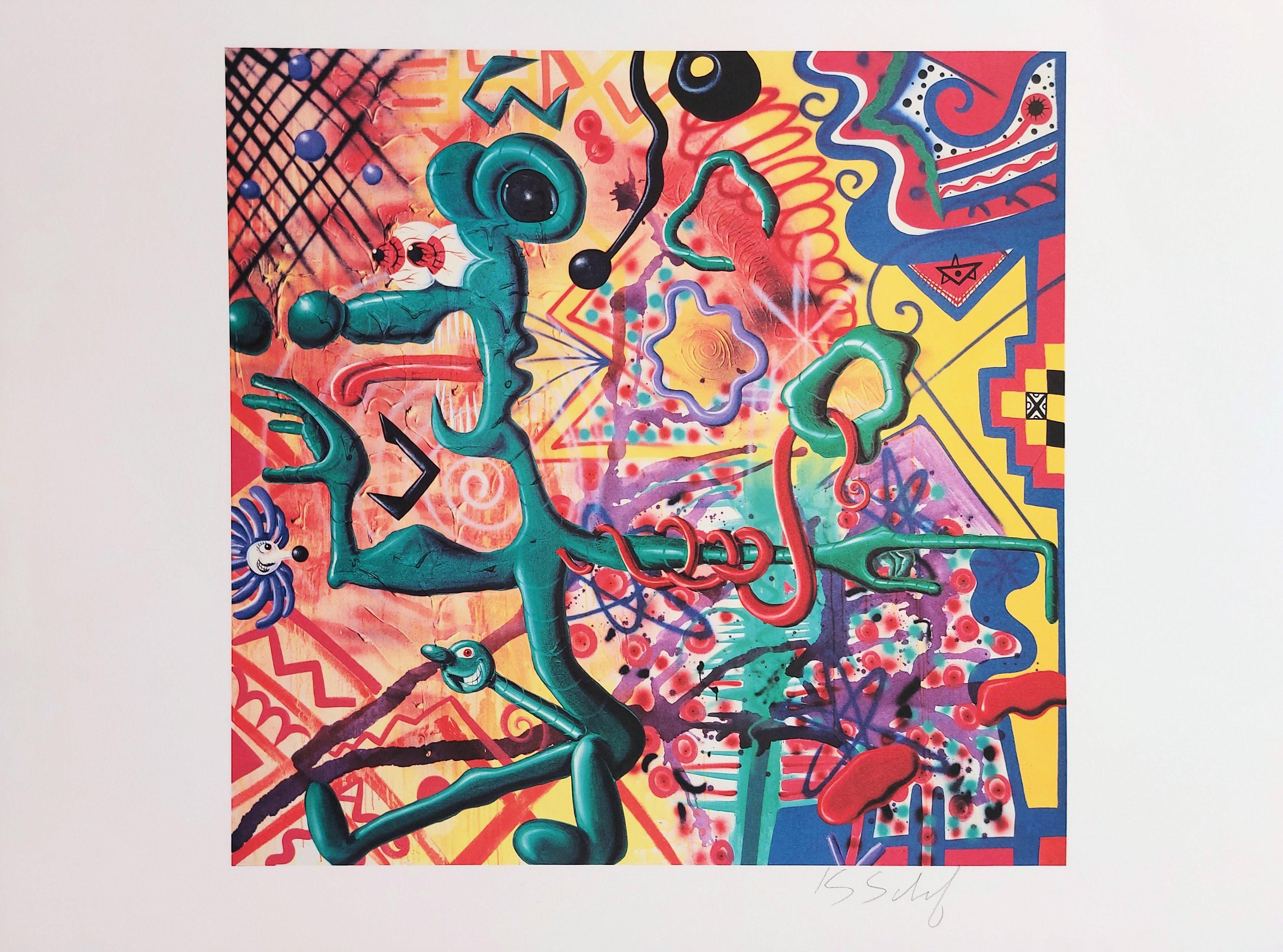Jacob Lawrence"The Capture, " Jacob Lawrence, Harlem Renaissance, Black Art, Haitian Series1987
1987
About the Item
- Creator:Jacob Lawrence (1917-2000, American)
- Creation Year:1987
- Dimensions:Height: 39.25 in (99.7 cm)Width: 28.25 in (71.76 cm)
- Medium:
- Movement & Style:
- Period:
- Condition:Excellent condition.
- Gallery Location:New York, NY
- Reference Number:1stDibs: LU1841210075272
Jacob Lawrence
One of the first Black artists to receive national acclaim in the United States, Jacob Armstead Lawrence (1917–2000) was born in Atlantic City, New Jersey, before moving to Philadelphia, Pennsylvania, and then to Harlem, New York, in 1930. While enrolled in a community after-school arts program, Lawrence developed his talents as a painter, drawing praise and encouragement from artist Charles Alston, who ran the program at the time. Despite his family’s financial struggles during the Great Depression, Lawrence continued his pursuit of the arts, developing a series of multipanel realist paintings dedicated to iconic Black historical figures, including Toussaint L’Ouverture, Frederick Douglass and Harriet Tubman. In 1938, he had his first solo exhibition at the Harlem YMCA and had begun to work for the Works Progress Administration (WPA).
In 1940, Lawrence received a grant from a philanthropic organization called the Rosenwald Fund, which allowed him to begin what would become his most famous work: The Migration Series, a narrative piece comprised of casein tempera paint on 60 18-by-12-inch hardboard panels featuring captions he’d written before he began to paint. (Fellow artist and future wife Gwendolyn Knight helped with the text.) Lawrence’s series focuses on the Great Migration of Black Americans from the agricultural South to the industrial North between 1910 and 1940.
By the end of the 1940s, Lawrence had earned widespread recognition for his important work and was the most celebrated Black artist in the United States. He continued covering Black historical figures throughout his career, though he also painted social commentaries on contemporary issues, like World War II and civil rights. He taught at the Art Students League in New York and at Black Mountain College in North Carolina (upon invitation from artist Josef Albers), among other institutions.
Lawrence’s works can be found in the collections of many major museums, including the Museum of Modern Art, the Metropolitan Museum of Art and the Whitney Museum of American Art in New York and elsewhere. His painting The Builders hangs in the White House today, as it was acquired by the White House Historical Association in 2007.
Find watercolor paintings, prints and more by Jacob Lawrence on 1stDibs.
- ShippingRetrieving quote...Ships From: Larchmont, NY
- Return PolicyA return for this item may be initiated within 3 days of delivery.
- "La Danse Barbare (from Les Saltimbanques), " Pablo Picasso, Figurative PrintBy Pablo PicassoLocated in New York, NYPablo Picasso (1881 - 1973) La Danse Barbare (from La Suite des Saltimbanques), 1905, printed 1913 Etching on Van Gelder Zonen wove paper Sheet 13 x 20 inches From the edition of 250...Category
Early 1900s Modern Figurative Prints
MaterialsPaper, Etching
- "Business-Men's Class, Y.M.C.A." George Bellows, Ashcan School PrintBy George Wesley BellowsLocated in New York, NYGeorge Bellows Business-Men's Class, Y.M.C.A, 1916 Signed, numbered "No. 41" and titled lower margin Lithograph on wove paper 11 1/2 x 17 1/8 inches Edition of 64 Provenance: Hirschl & Adler Galleries, New York Private Collection, Ohio Literature: Mason, 20. After his arrival from Columbus, Ohio in 1904, Bellows lived at the West Side YMCA. It was there that he met Eugene Speicher, another aspiring young artist who was to become his lifelong friend. Always interested in the anatomy of the human body, Bellows often satirized the various types who, while leading a sedentary life, feel compelled to devote a portion of their daily routine to physical self-improvement. Throughout his brief but illustrious career, George Wesley Bellows created striking scenes that documented ordinary American life in all its beauty and banality. Considered an American Realist, the artist eschewed embellishment, finding inspiration in the gritty boroughs of New York City, the rocky coastline of Maine, and, later, in his friends and family. Bellows garnered early recognition for his arresting portrayals of illegal prizefighting, dramatic works executed in dark tonal palettes that underscore the brutality of the violent sport. Bellows’ elderly Methodist parents hoped their son might pursue the ministry, a calling the extroverted athlete never received. The Columbus native competed on the baseball team at Ohio State University and also served as an illustrator for the college yearbook. In the fall of 1904—just months shy of his expected graduation—Bellows defied his father’s wishes and boarded a train to New York City in hopes of becoming a magazine illustrator like his idols Howard Chandler Christy and Charles Dana Gibson. Before leaving, he reportedly turned down an offer to play professional baseball with the Cincinnati Reds...Category
1910s Ashcan School Figurative Prints
MaterialsLithograph, Paper
- "Thanksgiving" Doris Lee, Family Genre Scene Interior, Americana, WPA, WoodstockBy Doris LeeLocated in New York, NYDoris Lee Thanksgiving, 1942 Signed lower right, titled lower left Lithograph on paper Image 8 3/4 x 11 3/4 inches Sheet 12 x 17 inches From the edition of 250 An American Scene pai...Category
1940s American Realist Interior Prints
MaterialsPaper, Lithograph
- "Sheepshead, Brooklyn, Long Island" Oscar Bluemner, Modernist WatercolorBy Oscar BluemnerLocated in New York, NYOscar Bluemner Sheepshead, Long Island, 1907 Signed with the artist's conjoined initials "OB" and dated "4-30 - 5 - 30" / "Aug 3, 07" Watercolor on paper 6 x 10 inches Provenance: J...Category
Early 1900s American Modern Landscape Drawings and Watercolors
MaterialsPaper, Watercolor
- "In Foreign Parts" Eugene Higgins, Southwestern Pueblo, Modern FigurativeBy Eugene HigginsLocated in New York, NYEugene Higgins In Foreign Parts, circa 1913 Signed lower right Watercolor on paper Sight 17 x 13 inches Born William Victor Higgins in 1884 to a Shelbyville, Indiana farm family where the only art Victor was aware of as a child was his father's love of flowers. "He loved their forms and their colors, and he tended his garden as a painter might work a canvas." At the age of nine, Victor met a young artist who traveled the Indiana countryside painting advertisements on the sides of barns. He purchased paints and brushes so the young Higgins could practice his own artwork on the inside of his father's barn. He also taught Victor about art museums and especially about the new Chicago Art Institute. This information never left the young artist, and he saved his allowance until his father allowed him at the age of fifteen to attend Chicago Art Institute. He worked a variety of jobs to finance his studies both there and at the Academy of Fine Arts. Victor Higgins traveled to New York in 1908, where he met Robert Henri, who became a significant influence by depicting every-day scenes and stressing the importance of the spirit and sense of place as important factors in painting. Higgins was also greatly affected by the New York Armory Modernism Show of Marsden Hartley in 1913. While Victor Higgins was in Chicago he met former mayor and avid collector Carter H. Harrison who was to prove instrumental in the growth of Higgins career for several years. Harrison agreed to support Higgins for four years to go to Paris and Munich and paint and study in the great museums in Europe. While at the Academie de la Grande Chaumier in Paris (1910-1914) he met Walter Ufer, who was another Chicago artist being sponsored by Carter Harrison. This meeting was not only a life-long friendship, but the beginning of a great change in the way Higgins looked at "American" art. He decided that America needed it's own authentic style rather than the 19th Century classic style he was taught in Europe. Very soon after returning to Chicago in 1914, Harrison sent him and Walter Ufer on a painting trip to Taos, New Mexico for a year in exchange for paintings. Higgins made other similar agreements and was able to support himself with his painting. This trip was a life-changing experience and introduced Higgins to the authentic America he had been looking for. In 1914 Taos was an isolated village about twelve hours from Santa Fe on an impossible dirt road. But the colorful life of the pueblo people and the natural beauty drew a collection of artists who became the Taos art colony, from which the Taos Society of Artists was founded in 1915. Victor Higgins became a permanent resident within a year of his arrival and a member of the society in 1917, exhibiting with Jane Peterson in 1925 and with Wayman Adams and Janet Scudder in 1927. The members would travel around the country introducing the Southwest scenes with great success. He remained a member until the Society's dissolution in 1927. Higgins was the youngest member of the group of seven. Other members were Joseph Henry Sharp, Bert Phillips...Category
1910s American Modern Figurative Drawings and Watercolors
MaterialsWatercolor, Paper
- "New York from the Ferry" John Marin, American Modernism Watercolor, CityscapeBy John MarinLocated in New York, NYJohn Marin New York from the Ferry, 1914 Signed and dated lower right Watercolor and graphite on paper 11 x 12 3/4 inches Provenance: An American Place, New York Kennedy Galleries, Inc., New York Christie's, New York, March 16, 1990, Lot 278 Private Collection (acquired from the above) Sotheby's New York, American Paintings, Drawings, & Sculpture, October 2, 2014, Lot 10 A major figure in early twentieth-century modernism, John Marin captured the colliding energies of the American urban scene and the vibrant contrasts of natural elements in the coastal landscape of Maine and other countryside locales. As one of the premier watercolorists of his era, Marin developed a light, spontaneous style ideally suited to conveying the freshness and flux of city and country experience -- his watercolors are often considered to match in strength those created by Winslow Homer in previous century. At the same time, Marin's sensitivity to mass, form, color, and line and their dynamic interchanges provided a precedent for the Abstract Expressionist movement of the late 1950s. Marin was born in Rutherford, New Jersey, to a family of European descent. After studying mechanical drawing and mathematics for half a year at the Stevens Institute of Technology in New York, Marin worked as a draftsman for several architects. It was not until he was almost thirty years old that he began to study art. He enrolled at the Pennsylvania Academy of the Fine Arts in Philadelphia from 1899 to 1901, and at the Art Students League in New York from 1901 to 1903, where his teachers were William Merritt Chase and Frank Vincent Dumond. While Marin was attending the League, the radical ideas of Arthur Wesley Dow were being disseminated and had an impact on the direction Marin would soon take in his art. Marin left for Europe in 1905. The next five years, which he spent abroad, were of tremendous importance to his career. He became a significant figure in the expatriate community in Paris, frequenting the Dôme, a café that served as a meeting place for artists and writers. While in Europe, Marin visited the Louvre and the Rijksmuseum in Amsterdam and, despite his claims that he had been indifferent to the Paris art world, he undoubtedly became aware of the art of Paul Cézanne and Henri Matisse. The works Marin created in Europe most strongly reflect the influence of James McNeill Whistler, especially the pastels he rendered in Venice. In the summer of 1909, Marin met Alfred Stieglitz in Paris. In February of the next year, Marin's work was shown along with that of Alfred Maurer at Stieglitz's gallery, 291. After returning to America in the following year, Marin became one of the most consistent members of Stieglitz's inner circle, showing at all three of his galleries -- 291, The Intimate Gallery, and An American Place. After 1910, Marin developed the routine that he would follow for the rest of his life, creating paintings, drawings, and prints in New York City and surrounding areas during the winter, and in the summer, traveling to the country, where he focused on the particular characteristics of the regions that he visited. He worked mainly in watercolor until 1928, when he began also to use oil. Marin never became purely abstract. He formulated a unique style melding influences of the art of the French Fauves, Cézanne, Matisse, and the French Cubists with a personal style of luminescent colors, agile brushwork, and a simultaneously delicate and strong handling. In city views, he used broken lines, a light touch, fluid color, and rhythmic compositions to convey what he described as the "great forces at work." He expressed the warring of the great and the small through relationships between masses. As he said, he sought to express the "pull forces" of the modern urban scene. Often portraying the new tall buildings of New York seen...Category
1910s American Modern Landscape Drawings and Watercolors
MaterialsPaper, Watercolor
- "Dodge Rebellion Girls" - 1967 Original Silkscreen on Paper Artists ProofBy Marc Foster GrantLocated in Soquel, CA"Dodge Rebellion Girls" - 1967 Silkscreen on Paper 1967 color silkscreen depicting the Dodge Rebellion Girls by Marc Foster Grant (American, b. 1947). A silhouette of the 'dodge gi...Category
1960s American Modern Figurative Prints
MaterialsPaper, Ink, Screen
- "Gold and Blue Gun" 1970s Original Portrait SilkscreenLocated in Arp, TXArtist unknown "Gold and Blue Gun" c. 1970s Silkscreen on paper Image size 21.25"x17" paper size 26"x40" unframed $350 Unsigned *Listed price reflects custom framing selected by sell...Category
1970s American Modern Figurative Prints
MaterialsPaper, Screen
- "Balcony" 1938 WPA Print Mid 20th Century American Broadway Theatre ModernismBy Leon BibelLocated in New York, NY"Balcony" 1938 WPA Print Mid 20th Century American Broadway Theatre Modernism. Silk screen on paper, 15” x 20". Numbered 15/20 lower left. Pencil si...Category
1930s American Modern Figurative Prints
MaterialsPaper, Screen
- Swimmer - Screenprint (Olympic Games Munich 1972)By Ronald Brooks KitajLocated in Paris, FRRonard Brooks KITAJ Swimmer Screen print Signature printed in the plate On heavy paper 101 x 64 cm (c. 40 x 26 inch) Made for the Olympic Games in Munich, 1972 Excellent conditionCategory
1970s American Modern Figurative Prints
MaterialsScreen
- Ratfinkbonerthunk : Surrealist Rat - Original Giclee Print, HandsignedBy Kenny ScharfLocated in Paris, FRKenny Scharf Ratfinkbonerthunk : Surrealist Rat, 1990 Original Giclee Print Handsigned in pencil On Arches vellum 56 x 76 cm (c. 22 x 30 in) Published by Editions Vermorel in 1990 ...Category
1990s American Modern Figurative Prints
MaterialsScreen, Giclée
- Interpol - Original Handsigned Screen PrintBy Shepard FaireyLocated in Paris, FRShepard FAIREY Interpol Original screen print (serigraphy) Handsigned in pencil Numbered /550 copies On cream paper 61 x 46 cm (c. 24 x 18 inch) Excellent condition ABOUT : "Interpol is one of my favorite bands, and I’ve been lucky enough to collaborate with them throughout the years. My first introduction to them was when I stalked them backstage at Coachella and offered to create art for them if they ever needed it… to my surprise, they knew my work already and decided to take me up on my offer...Category
2010s American Modern Figurative Prints
MaterialsScreen




